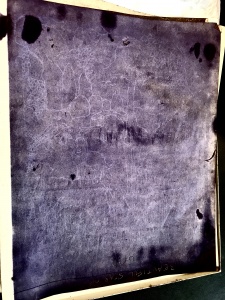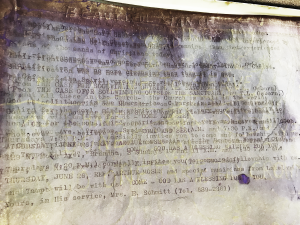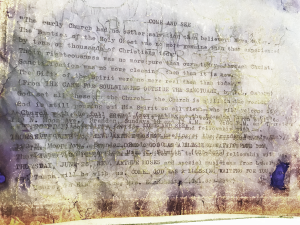Early Duplicators
Though the practical history of early duplicators is often characterized by ambiguity and imprecision, the cultural history of copying is rich with insight on social movements catalyzed by minorities. Blah. [1]
- Single indent
In November 1968, Changing Times identified nine principal alternatives to “real printing”. Including a table of common uses and suitable quantity ranges, the article targets less affluent individuals looking to save by means of the “highly competitive trade” of printing. This article is among many indicators of a pivotal moment of transition in the history of printing in the United States. From Eugenio de Zuccato’s Papyrograph and Typograph to Thomas Edison’s Electric Pen and Mimeograph, the sudden invention of countless copying machines revolutionized the printing industry. Though the practical history of early duplicators is often characterized by ambiguity and imprecision, the cultural history of copying is rich with insight on social movements catalyzed by minorities. These social movements were made possible by a new potential for disseminating information that early copiers afforded under-represented groups.
Despite the plethora of duplicating technologies, this paper will focus on the mimeograph as the face of their social ramifications. According to an article in Office Systems, a popular magazine in the late 1900s, the “most popular and cost effective technologies for producing multiple copies were mimeograph machines and spirit or stencil duplicators”. Patented as number 180,857 on August 8, 1876, the "Improvement in Autographic Printing” invented by Thomas Edison would later become known as the mimeograph. After AB Dick Company licensed the technology from Edison, mimeographs came into everyday use in the 1900s. The machines, which utilized the drum of a rotary machine to force ink through the holes of a stencil, were marketed as “The Edison Mimeograph”. In the span of only several decades, any and all individuals had access to what only an elite bracket of society once did: printing.
float:left
- Hekto-Printer gelatin transfer duplicator, by Heyer, Inc.
-
200BLAHCAPTOON
-
caption.
-
caption.
A Counterculture Poem
A Mimeograph Biography
Notes
- ↑ Author, Book, pg. #.
License
The content on this page of the is licensed Creative Commons Attribution-NonCommercial-NoDerivatives 4.0 International. To understand your rights as a user of this website, please see this page: http://creativecommons.org/licenses/by-nc-nd/4.0/


